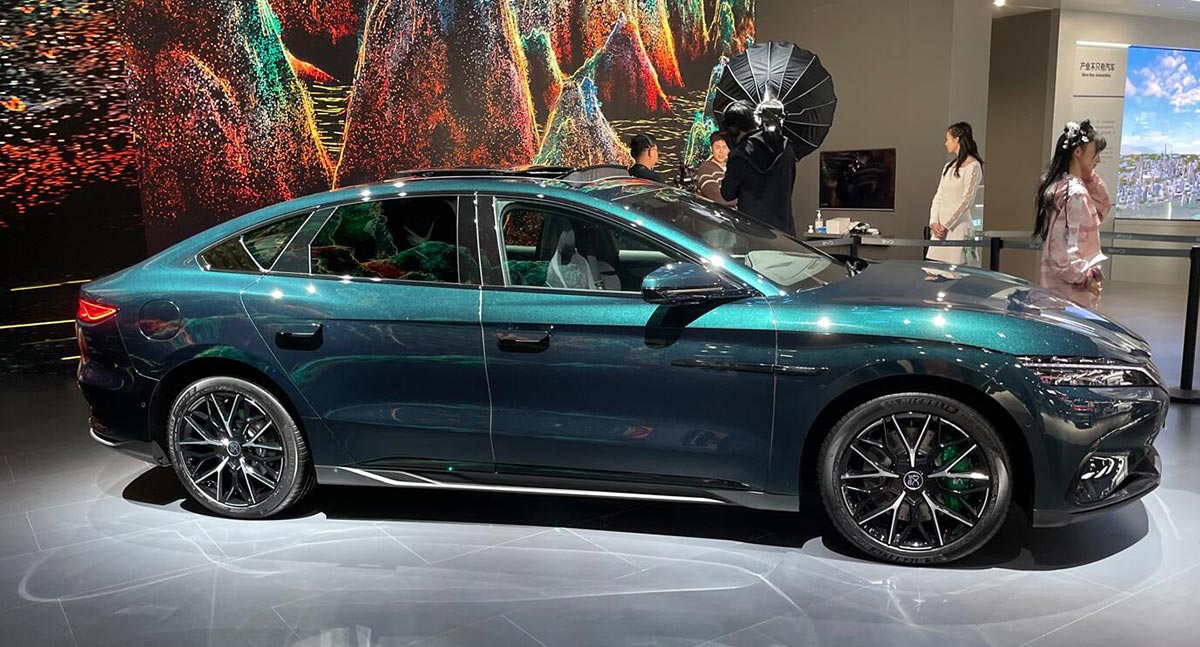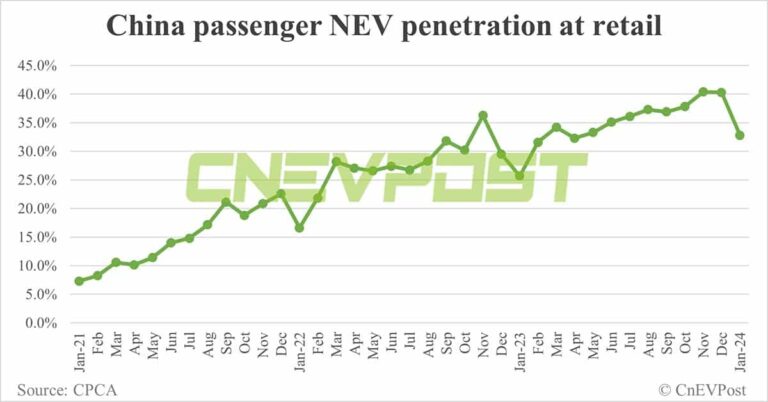BYD's next-generation DM hybrid system is expected to give the vehicle a combined range of nearly 2,000 kilometers, while the new e-Platform 4.0 will have a higher level of integration and is expected to further reduce costs, according to local media.
(Image credit: CnEVPost)
BYD (HKG: 1211, OTCMKTS: BYDDY) kicked off a new round of model updates last month in a strong second offensive against traditional fuel vehicle models, and it looks like this is just the beginning.
BYD's core management team said at a recent internal meeting that the company will mobilize all of its strengths in technology and upstream and downstream industry chains to fight a "liberation battle" over the course of 3 years, 36kr said in a report today that cited a number of people familiar with the matter.
In the move, the company will update its DM (Dual Mode) hybrid system, as well as its all-electric e-Platform, according to the report.
BYD sells both plug-in hybrid electric vehicles (PHEVs) and battery electric vehicles (BEVs), which each contributed about half of BYD's 3.02 million new energy vehicle (NEV) sales last year, according to data compiled by CnEVPost.
The company rolled out its DM hybrid technology platform in 2008 and launched its fourth-generation DM platform in 2021, dividing the technology into the more performance-oriented DM-p and the more energy-consumption-oriented DM-i.
BYD is set to launch its fifth-generation DM system, with the DM-i branch enabling the vehicle to consume as little as 2.9 L of fuel per 100 kilometers, and drive close to 2,000 kilometers on a full tank of fuel and full charge, 36kr cited a source at the meeting as saying.
As a comparison, conventional gasoline cars typically have a range of only about 600 km when filled up with gas, the report noted.
Even models from local counterparts will struggle to compete with BYD's latest DM technology, according to the report.
SAIC-GM-Wuling's Xingguang has a combined range of 1,100 km and fuel consumption of 3.98 L/100 km on a low battery, while the Geely Galaxy L6 has a combined range of 1,370 km and fuel consumption of 4.55 L/100 km on a low battery, the report noted.
BYD's BEV platform e-Platform could be updated from 3.0 to 4.0 this year, according to the report.
BYD launched e-Platform 1.0 in 2010 and e-Platform 3.0 in 2021 along with its fourth-generation DM technology.
The vast majority of BYD's current BEVs are based on e-Platform 3.0, with the main features being integration, lightweight and efficiency. The eight-in-one electric powertrain, for example, reduces volume and weight dramatically, and costs by nearly 20 percent, according to 36kr.
The upcoming e-Platform 4.0 is still aiming to improve the integration of components.
With more parts being integrated and fewer wiring harnesses, there will be room for new cost reductions, 36kr's report said, adding that this means there is still room for further reductions in car prices.
BYD's biggest goal in its "liberation battle" is to capture more share from the gasoline car market and take three years to bring NEV penetration to a whole new level, the 36kr report said.
The NEV giant hopes to bring about the "liberation" of the NEV market, but the process will inevitably affect its counterparts producing NEVs, the report noted.
BYD launched the Qin Plus Glory Edition and Chaser 05 Glory Edition on February 19, the second working day after China's 2024 New Year's holiday, with the goal of further attacking traditional gasoline models at lower prices than comparable fuel vehicles.
As of now, several BYD models have seen the Glory Edition update with significantly lower prices.


